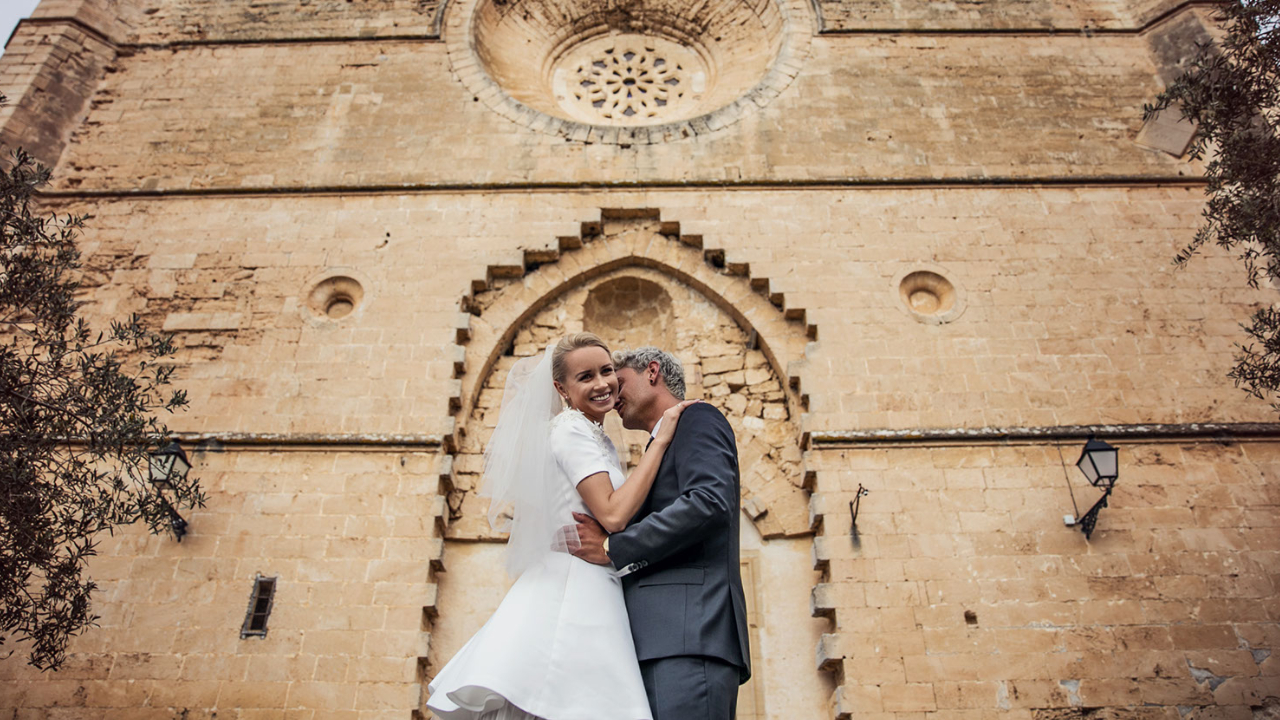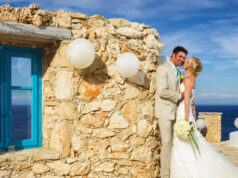For those couples planning their wedding, Spain’s traditions and customs can add a distinctive flavour to the big day. From the charm of the las arras matrimoniales (wedding coins) to the merriment of the traditional Spanish wedding dance, there are many traditions to incorporate that can enhance your matrimonial ceremony. In this article, we will delve into ten unique Spanish traditions that you might consider including in your wedding.
▶️ Read also: A journey through European wedding traditions
⚠️ Good to know: Modern Spanish weddings often blend these traditional customs with more contemporary wedding trends, so the exact practices can vary widely depending on the couple’s personal preferences and the region of Spain in which they’re marrying. It’s also important to note that Spain has diverse cultures and traditions across its different regions, and so wedding customs can vary from one region to another.
Las Arras Matrimoniales (Wedding Coins)
In a poignant part of the ceremony, the groom presents his bride with 13 gold coins, representing Christ and the twelve apostles. Each coin symbolises different marital values the couple wishes to affirm, such as trust, commitment, and loyalty. The number 13 also signifies Christ and his 12 apostles. This tradition, which has roots in Roman custom, reinforces the bond between the couple, showcasing their promise to share everything in their future together.
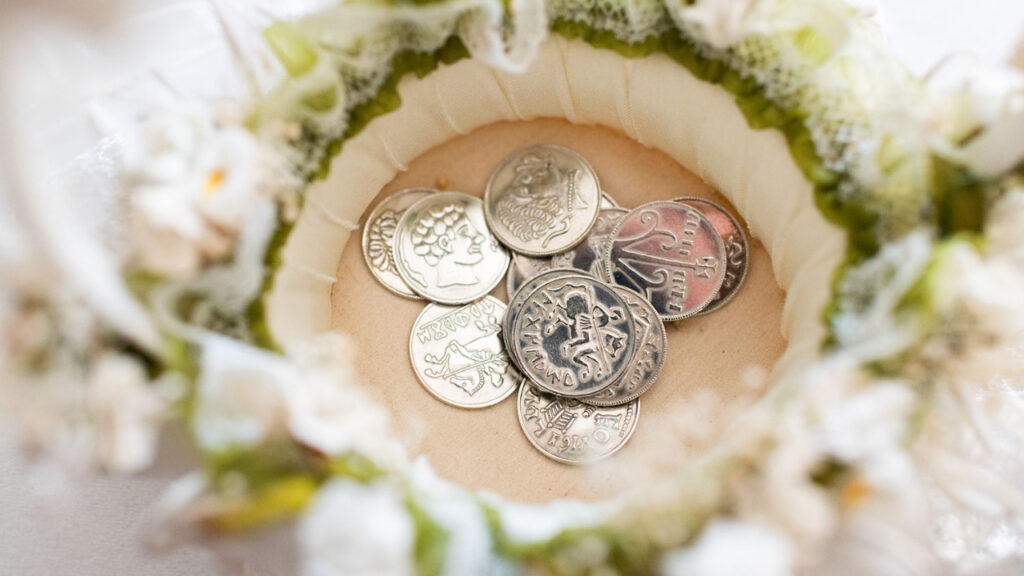
La Madrina and El Padrino
These are terms for the godmother and godfather, but their roles at a Spanish catholic wedding extend far beyond their religious connotations. The Padrino is traditionally the bride’s father and accompanies her down the aisle, while the Madrina is the groom’s mother. This reversal from more standardised Western traditions highlights the importance of matriarchs and patriarchs within Spanish culture. It is a beautiful way to incorporate family into the ceremony.
El Padrino: In a departure from many Western wedding traditions where the bride is escorted down the aisle by her father, in Spanish weddings, this honour is often given to the godfather. Traditionally, this is a role taken by the bride’s father, and it signifies the transfer of responsibility and care from her family to her new husband. El Padrino also has other responsibilities, such as being a witness to the marriage, helping with wedding preparations, and even contributing to wedding costs.
La Madrina: The role of the godmother is equally significant in a Spanish wedding. Often this role is filled by the groom’s mother. She stands as a maternal figure and a source of support to the couple. She also has a few ceremonial roles, one of the most important being carrying the wedding rings to the church. Traditionally, La Madrina also carries a small basket or bag for collecting the money that guests would throw in the direction of the newlyweds as a gesture of good luck and prosperity.
Spanish lace mantilla
This traditional Spanish veil, typically crafted from silk or lace, is a symbol of modesty and respect in the presence of God. It’s not just a bridal accessory, but a nod to religious and cultural heritage. The mantilla is often paired with a peineta – a large decorative comb – which lifts the veil off the bride’s face and head, creating a stunning halo effect.
Orange blossoms
Spanish brides often incorporate orange blossoms in their bridal look, as the fragrance has been associated with joy, happiness, and fulfilment since ancient times. Often, these blossoms are woven into the veil or included in the bridal bouquet. The blossoms represent the purity and chastity of the bride, symbolising a rich and fruitful marriage.
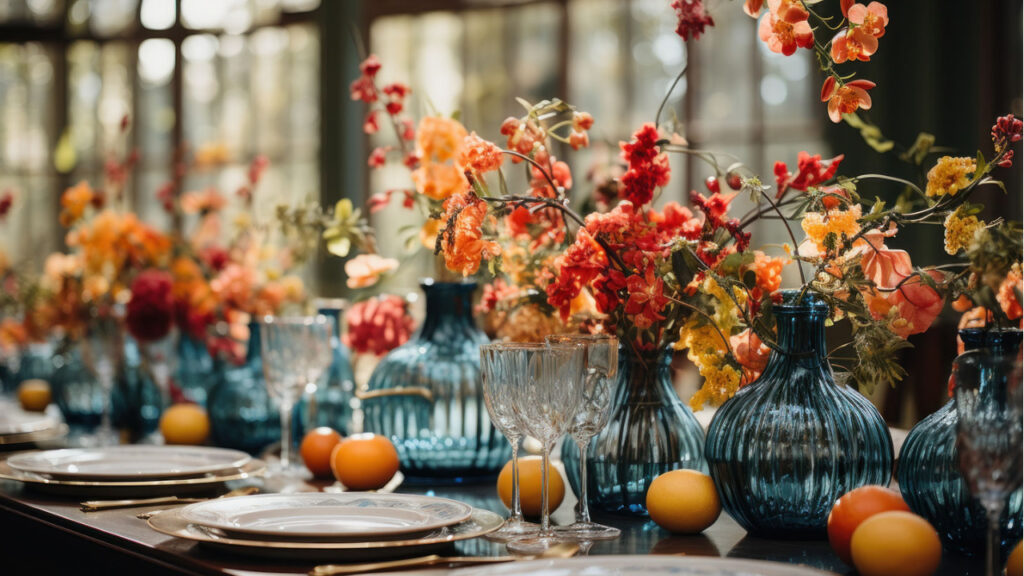
Sevillana dance
Spanish weddings are renowned for their exuberant celebrations, and the Sevillana dance is a big part of that. Originating from the colourful region of Andalusia, this folkloric tradition involves choreographed steps performed in pairs. As the dance builds in intensity, it’s not unusual for all the guests to join in, making for a joyous and unforgettable wedding reception.
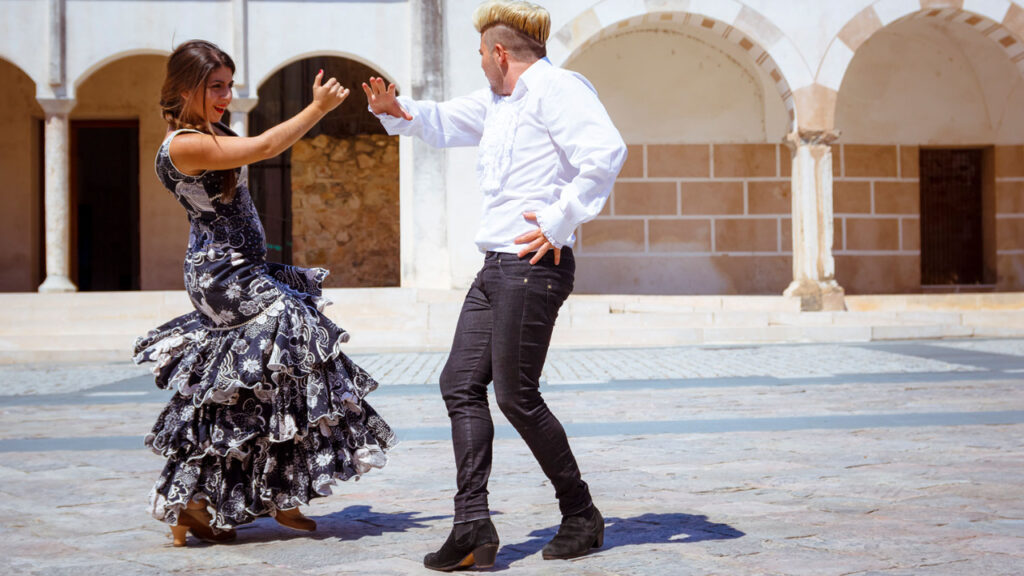
Traditional Spanish wedding cake
The ‘tarta nupcial’, or wedding cake, in Spain traditionally strays from the tall, tiered design often seen in other cultures. Instead, it’s usually a simple almond cake. The almonds symbolise the hope that the couple’s marriage will be bountiful and their life together fruitful. Some couples may choose to stick with this simplicity, while others may wish to incorporate almonds into a more elaborate cake design. Either way, the cake-cutting ceremony still represents a shared task in the couple’s new life together.
▶️ Read also: Five affordable European countries to consider for your wedding
Spanish wedding favours
The ‘detalle’ or wedding favour is a small token of appreciation given to guests for their presence and well-wishes. These mementos vary widely, but they often showcase Spanish culture and local goods. For instance, couples might give guests a small sachet of traditional Spanish sweets, a miniature bottle of locally-sourced olive oil, or a hand-painted ceramic tile in the style of Spanish majolica. This is a wonderful way to leave a lasting impression and to share a piece of Spanish culture with your guests.
And long wedding reception!
The Spanish truly know how to celebrate, and their weddings often last until the early hours of the morning. After a late-afternoon ceremony, guests enjoy an extended dinner, followed by hours of dancing and socialising. Drinks flow freely, and there’s often a second meal served around midnight to keep energy levels high. If you’re aiming for a non-stop celebration where guests can truly let their hair down, this Spanish tradition is a must-have for your wedding.
By integrating some of these unique Spanish traditions into your wedding, you can create a distinctive and memorable day that celebrates your love story. Whether you choose to wear a traditional mantilla or incorporate the lively Sevillana dance, each tradition adds a touch of Spanish culture that will make your wedding stand out.

